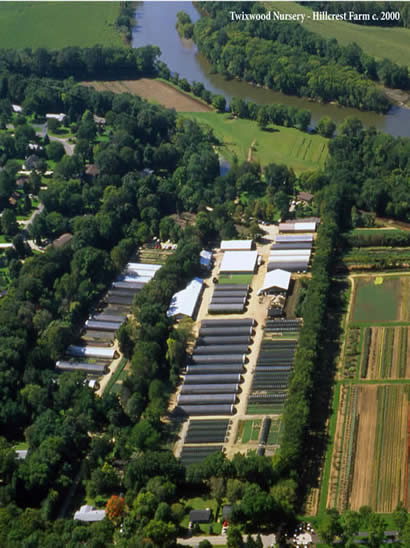Twixwood is now entering the Twenty-first Century, albeit eighteen years late. We are going to have a blog even if we do not know what one of them is. They tell me it is the latest thing and that I am going to be the blog writer because everyone else at the nursery is busy working at their jobs and besides it takes them a long time to write something because they agonize over the wording. They worry about offending. I, on the other hand, do not have a regular job here and I do not suffer from agonizing over my writing. We hope this new blog is informative; that it helps you, the customer and reader, in your business. We care about your profitability.
We are going to begin with a brief story about where we are in the path of life, where we foresee us going in the future, and what happened that caused us to wash up upon the shores of the nursery trade. The goal is reassurance. We do not want the customers to be worrying about our future as a reliable and innovative nursery product supplier instead of concentrating on their primary job which is to make money in the landscaping business. Dianne and I have been working at Twixwood for forty years. We plan on running the business for many years to come and the reason is because I did not develop an exit strategy early on. There is a lesson there somewhere if I were smart enough to figure it out.
Twixwood now has one million square feet of poly covered space—some cold frames and some heated gutter connecteds—all on six different farms for a total of 363 acres complete with wells, gravel roads, irrigation ponds, and many buildings. I estimate the cost of doing this development at around $5 a square foot; so you can see where my life savings are located. A wholesale nursery is not a business that is easy to market. Therefore, we are going to keep it going for a long time; there is little other use for the land and facilities other than growing landscaping types of plants.
We are half in one gallon perennials and half in flats of groundcovers. The perennial side of things is quite dynamic with new patented plants coming on all of the time and landscaping fads always changing. The groundover side is quite stable with lots of pachysandra and vinca minor going out although the e. coloratus business is slowly declining because of crown gall, scale insects, and a general unkempt look. The nice thing about us being in the groundcover business is that it indicates that we do not suffer from good taste; we are obviously in the business for the money and thus we will grow whatever plants the market demands. We are always looking out for new and improved plants to add to the palette. We plan on keeping the nursery dynamic to go along with the times.
The alert reader will, about now, begin to wonder how a smart person, such as myself, arrived at this situation of six farms, one million square feet of poly, and 363 acres. When this subject comes up at home Dianne, my wife, has already offered a few hypothesis. These were not complimentary and tended toward the personal. My side of the story is that I have always tried to keep ahead of the market by never running out of plants to sell to our good customers. The alternative side of the story is that every decision seemed to be a good one at the time. It is possible that some over-optimism crept into the decision making process here and there. The absence of an exit plan is an oversight that we will not make in our next reincarnation.
And that is why we are here and why we are going stay here and how we are going to act while being here. More blogs to follow.

